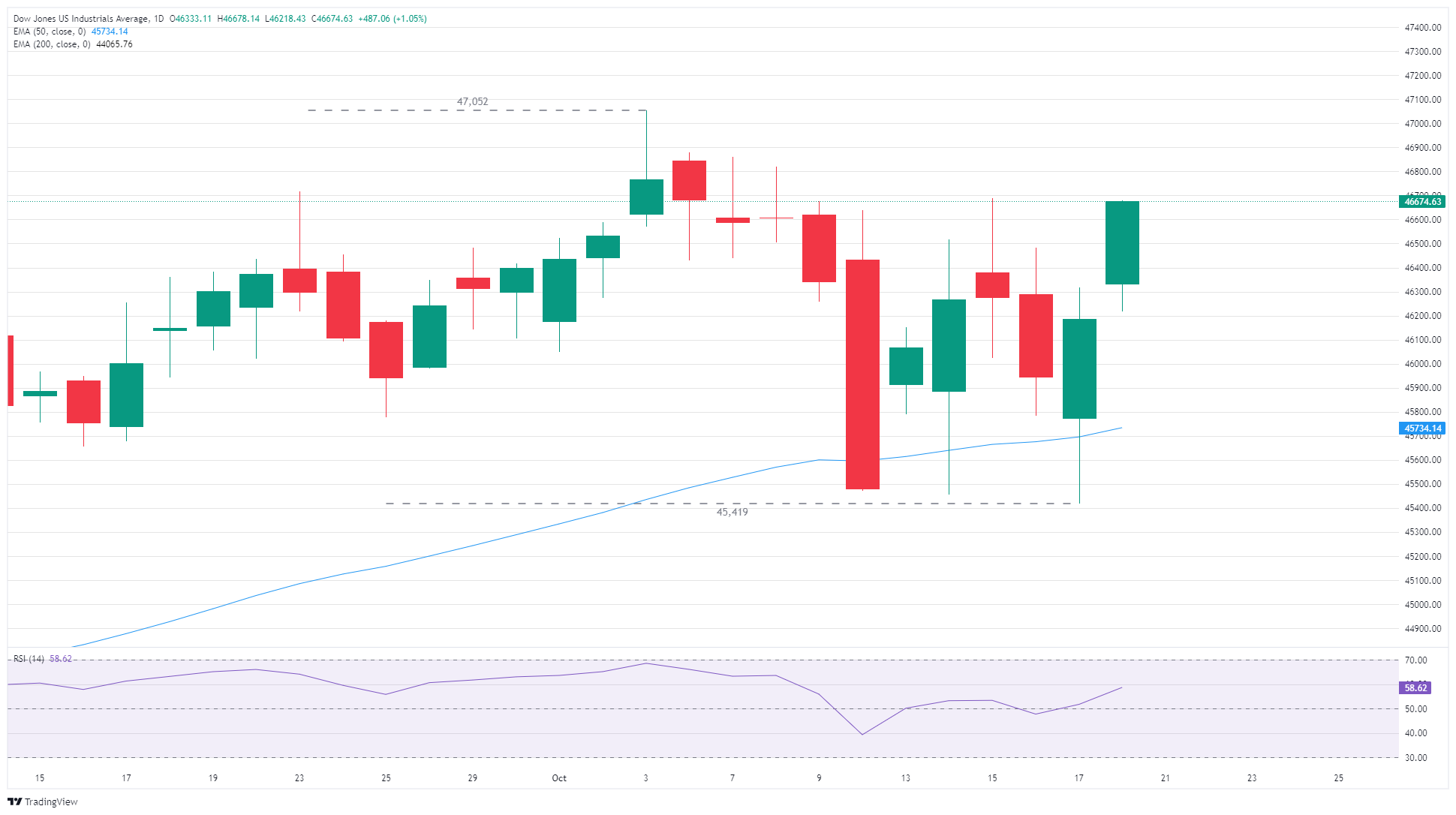Dow Jones Industrial Average rises on key tech rally stocks, government shutdown hopes
- The Dow Jones rose over 450 points on Monday.
- Equities took a step higher after Apple stock fielded a ‘buy’ upgrade from analysts.
- Signs that the US government deadlock may be loosening has sparked fresh investor confidence.
The Dow Jones Industrial Average (DJIA) caught a bullish tailwind on Monday, rising over 450 points to kick off the new trading week. Apple (AAPL) shares rose strongly, leading the charge into the high end as the tech rally gives fresh signs of life, and investors are hoping that rumors of a potential end of the US federal government shutdown will result in an end to the federal closure.
Apple shares rallied on Monday, dragging the rest of the tech-dependent bull market along with it. Analysts from Loop Capital raised Apple’s stock outlook from ‘hold’ to a ‘buy’, prompting loose market cash to pile into the iPhone maker.
Shutdown drags on, but hope for a near-term solution exists
The US federal government shutdown has entered its twentieth day and shows no signs of coming to a quick end. However, according to key White House officials, there may be a chance to pass a near-term funding agreement while the federal government works out a more meaningful budget resolution. The US government failed to reach an agreement on a funding bill at the start of the US government’s fiscal year on October 20, and House Republicans sent Congress into recess for this week after two weeks of little movement on budget proposals.
Q3 earnings season is in full swing, and the overwhelming majority of companies have beat analyst expectations heading into the fourth quarter. 76% of S&P-listed companies have beat forecasts on third quarter earnings, bolstering the general market’s upward momentum.
Dow Jones daily chart

Dow Jones FAQs
The Dow Jones Industrial Average, one of the oldest stock market indices in the world, is compiled of the 30 most traded stocks in the US. The index is price-weighted rather than weighted by capitalization. It is calculated by summing the prices of the constituent stocks and dividing them by a factor, currently 0.152. The index was founded by Charles Dow, who also founded the Wall Street Journal. In later years it has been criticized for not being broadly representative enough because it only tracks 30 conglomerates, unlike broader indices such as the S&P 500.
Many different factors drive the Dow Jones Industrial Average (DJIA). The aggregate performance of the component companies revealed in quarterly company earnings reports is the main one. US and global macroeconomic data also contributes as it impacts on investor sentiment. The level of interest rates, set by the Federal Reserve (Fed), also influences the DJIA as it affects the cost of credit, on which many corporations are heavily reliant. Therefore, inflation can be a major driver as well as other metrics which impact the Fed decisions.
Dow Theory is a method for identifying the primary trend of the stock market developed by Charles Dow. A key step is to compare the direction of the Dow Jones Industrial Average (DJIA) and the Dow Jones Transportation Average (DJTA) and only follow trends where both are moving in the same direction. Volume is a confirmatory criteria. The theory uses elements of peak and trough analysis. Dow’s theory posits three trend phases: accumulation, when smart money starts buying or selling; public participation, when the wider public joins in; and distribution, when the smart money exits.
There are a number of ways to trade the DJIA. One is to use ETFs which allow investors to trade the DJIA as a single security, rather than having to buy shares in all 30 constituent companies. A leading example is the SPDR Dow Jones Industrial Average ETF (DIA). DJIA futures contracts enable traders to speculate on the future value of the index and Options provide the right, but not the obligation, to buy or sell the index at a predetermined price in the future. Mutual funds enable investors to buy a share of a diversified portfolio of DJIA stocks thus providing exposure to the overall index.

